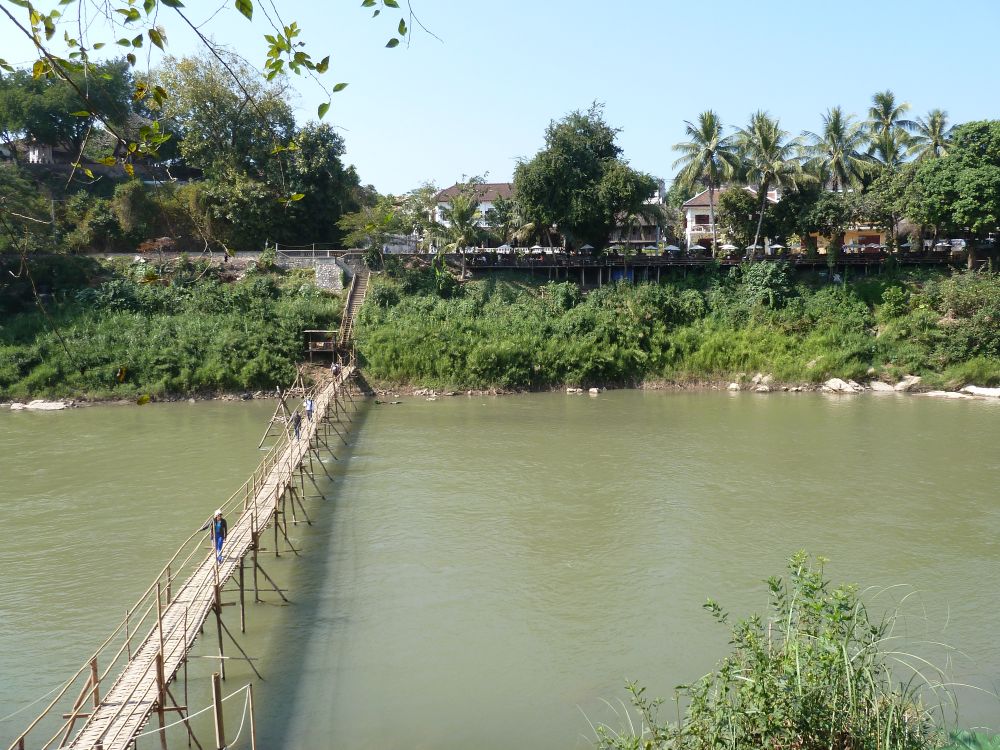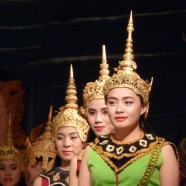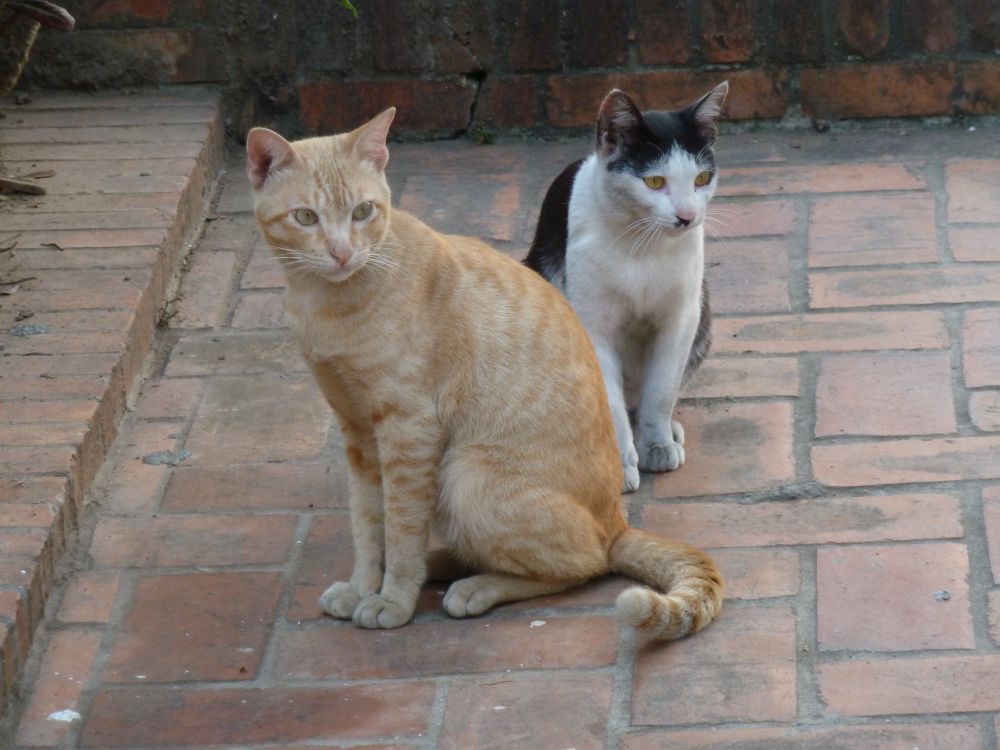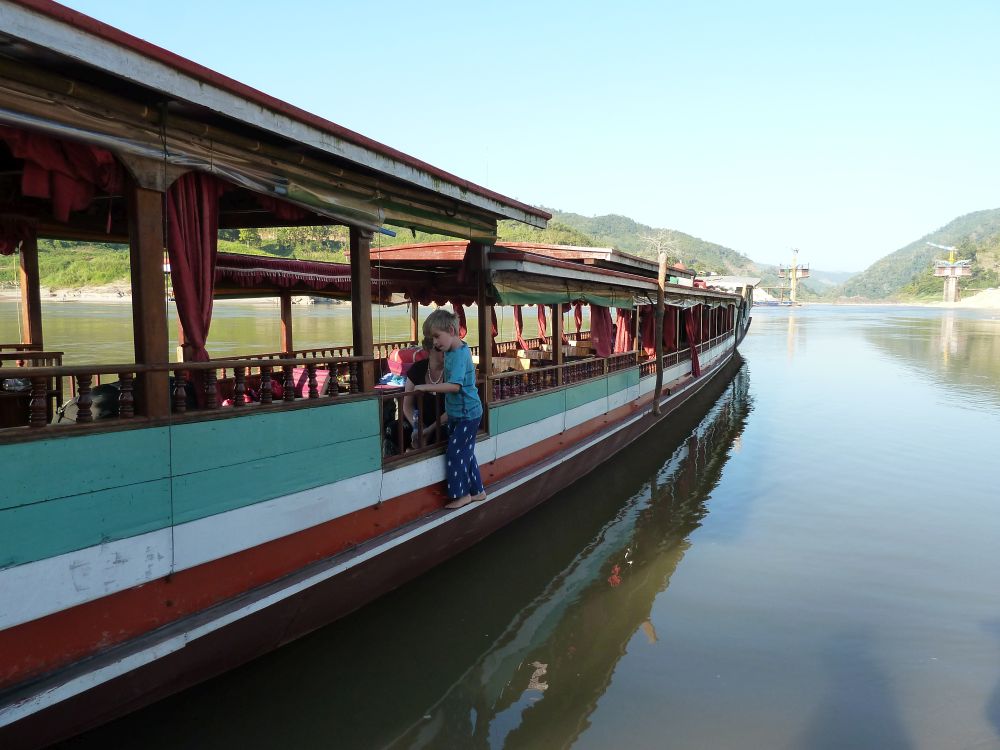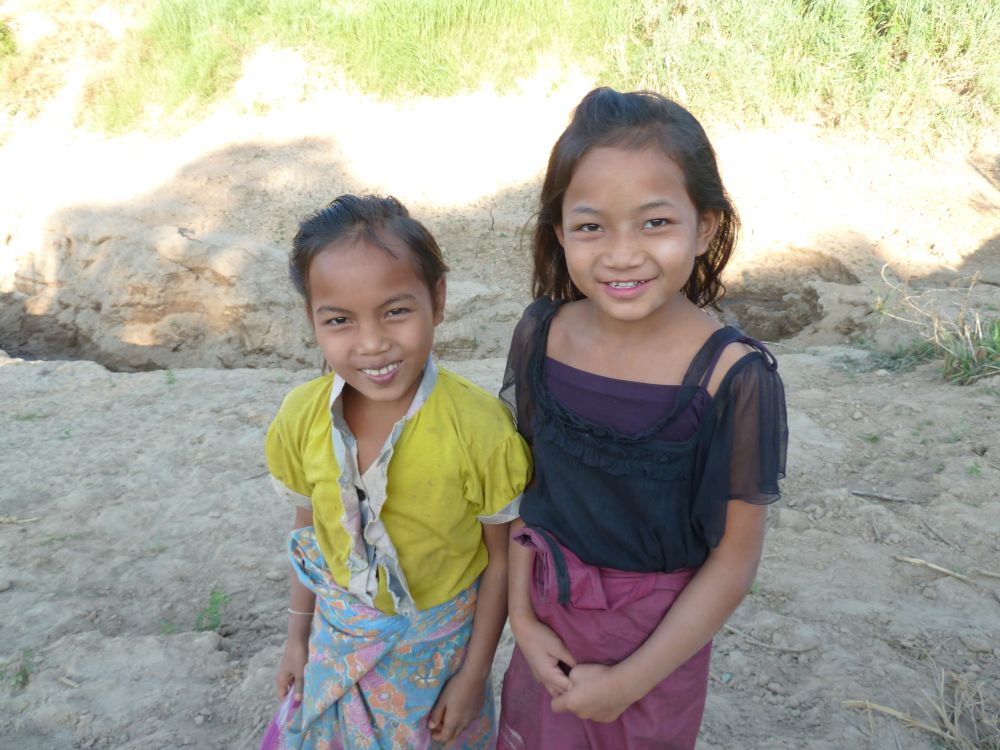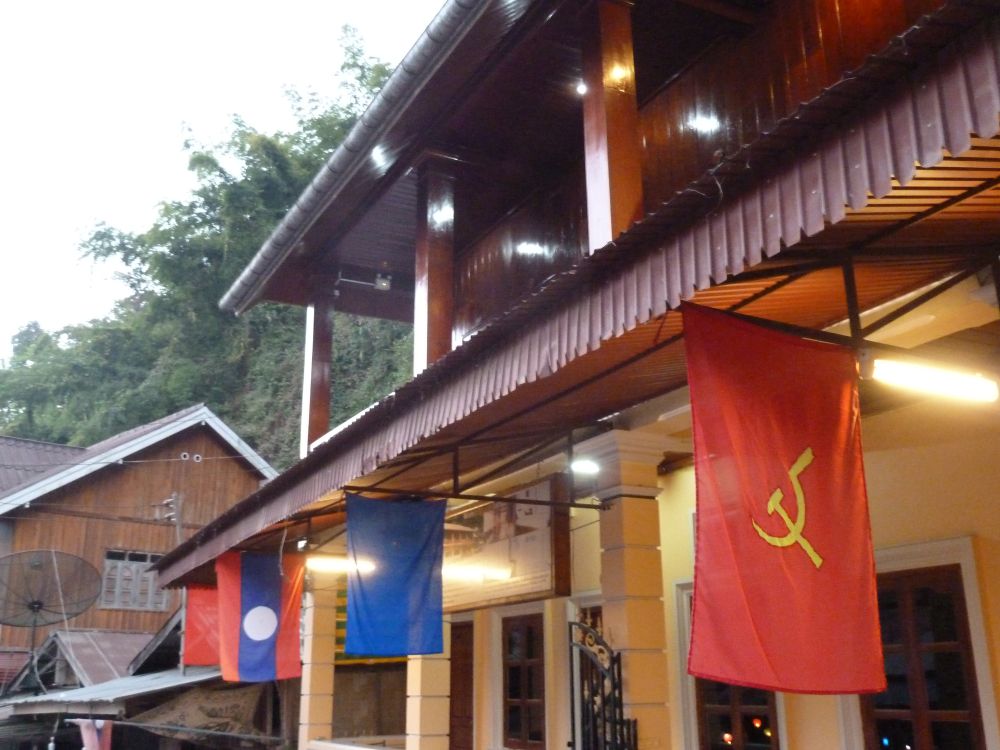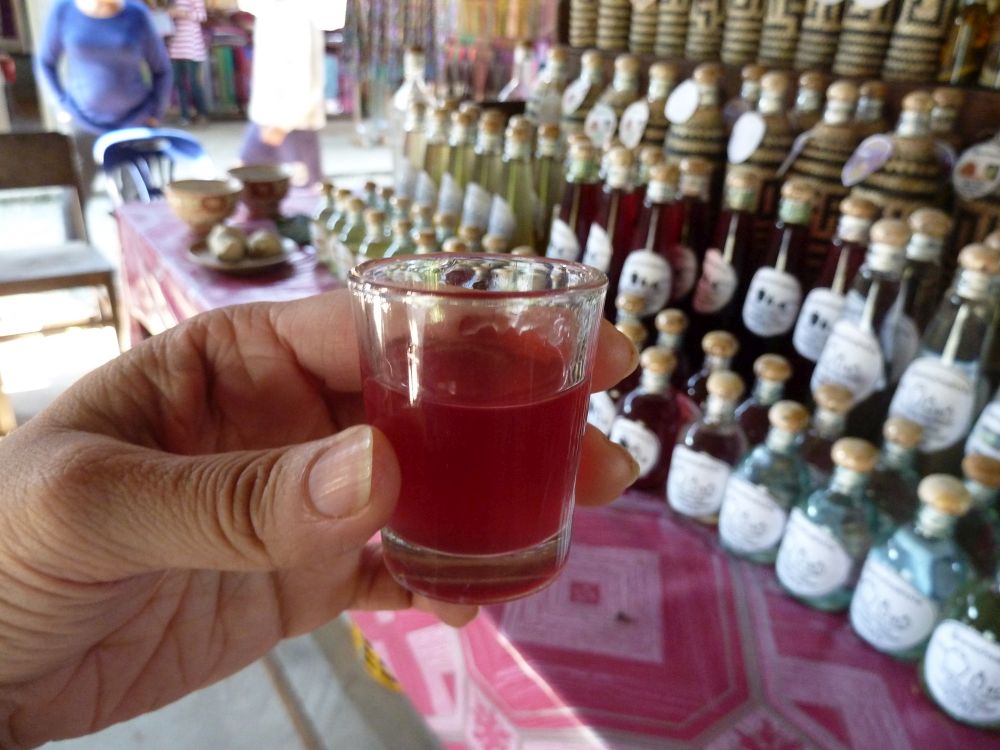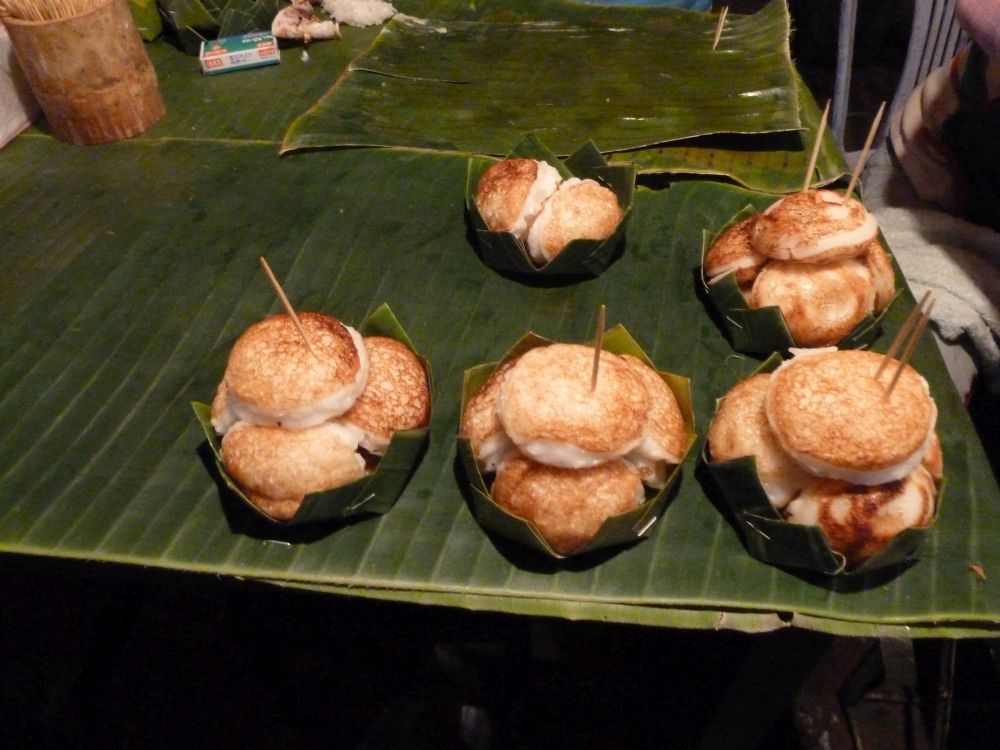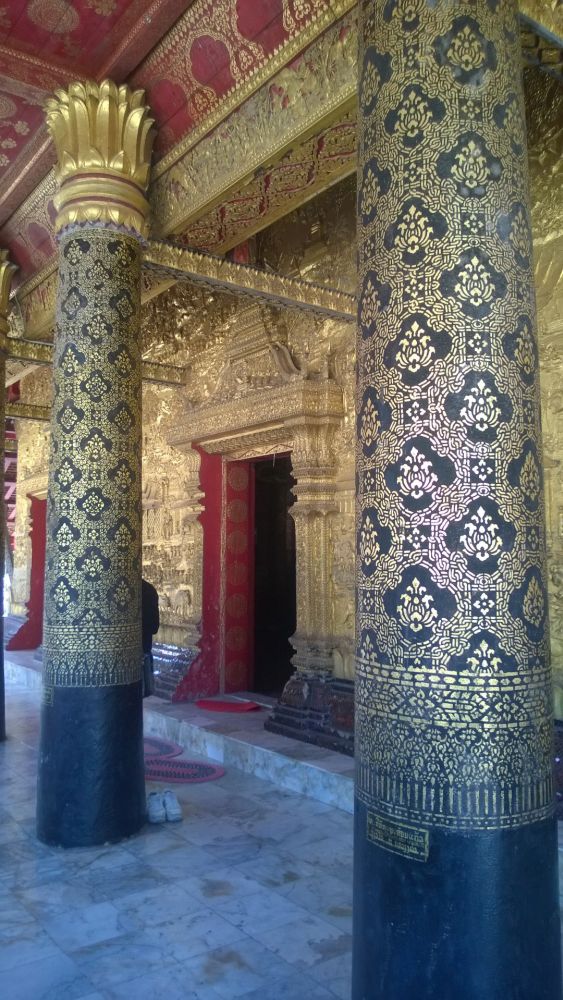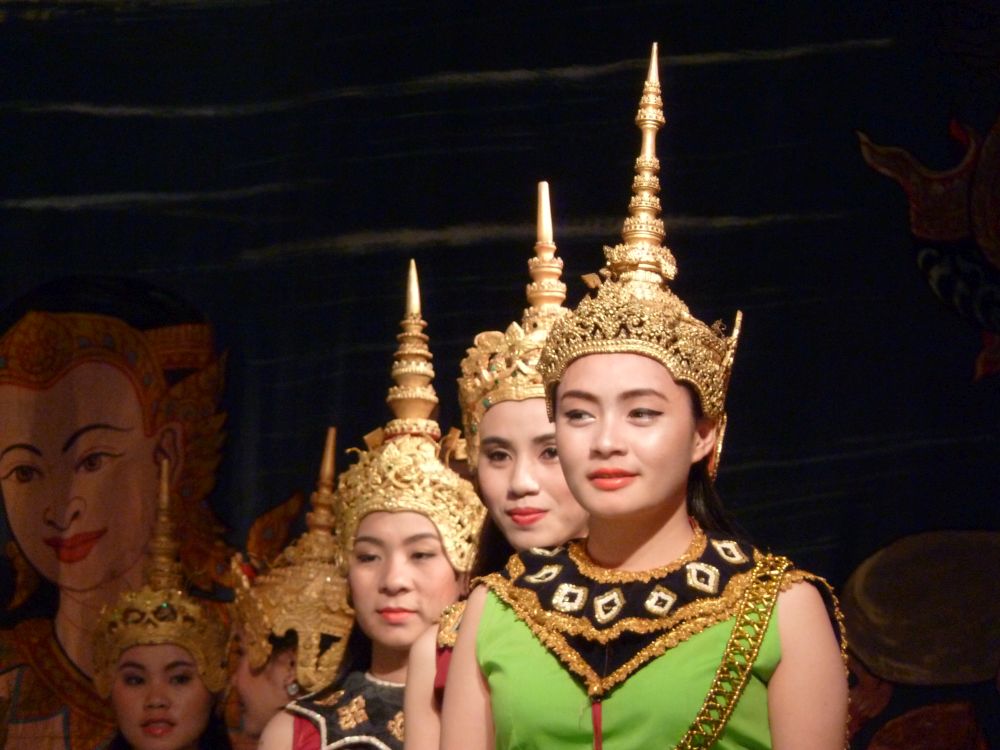Luang Prabang, Laos
I’m sitting in a small cafe in Laos called Cafe Joma. I paid for it with a thousand baht note because I didn’t have enough Lao kip (LAK) to pay for it (an Americano cost 16,000 LAK, roughly US $2). I got my change back as a 20 USD note and the rest in LAK. This is indicative of how the economy here operates with three currencies (possibly in Vietnamese dong too, I haven’t tried to find out).
The coffee when delivered to my table in itself is a symbol of some of the more thoughtful elements of life in Southeast Asia. It was delivered to me in a cup and saucer with a small container of hot milk. I really do appreciate this touch. It’s so common to go to a coffee shop in Seattle (or pretty much any restaurant in the United States) to have to top off your coffee with cold milk from a thermos flask. The cold milk turns your hot coffee into lukewarm coffee. In SE Asia however, almost everywhere you order coffee or tea, if it comes with milk (rather than creamer), it is hot. I think Asians would be rather puzzled at our tradition of pairing cold milk with a hot beverage.
I should of course mention that the very Western style coffee shop I’m sitting in, in the little town of Luang Prabang, Laos, is strictly for tourists and not any kind of fixture in the life of a typical Lao person. And the reason I’m sitting in a very touristy place is because it’s the best sort of place to get your writing done (coffee, comfortable seating, low music, free WiFi). Also, I budgeted three entire days to stay in this little UNESCO World Heritage site, about two more than strictly necessary to see it properly, resulting in a lot of free time on my hands.
Speaking of wifi, that is another wonderful thing about travelling around SE Asia. Almost every establishment offers free, high-speed wifi, something I’ve had trouble finding even in North America and Europe.
Luang Prabang itself is a picturesque sleepy little town. We arrived here by boat from Chiang Khong, a small border town in Thailand. The boat sailed across the Mekong River for two very cold days. My attempt to get away from the cold, dark Seattle winters have come to naught after all. The temperature on the Mekong was around 60 F with a wind chill that probably brought it down to 40-50 F. I was relieved to have packed a very warm base layer and jacket back in Bombay (even though I felt really silly doing it in the sweltering heat and humidity there). The boat crew provided us some blankets (pink Hello Kitty ones!) which kept us somewhat warm. It was still very very cold though and I spent a bit part of my time curled up under a blanket reading my iPad (it was like being a child again, with better technology). And the Mekong and its surroundings is pretty homogeneous if you see it for two days straight.
The boat made 1-2 stops per day. The first day we stopped to see a small Khamu village. The Khamu are an ethnic tribe who moved to Laos in 7AD. For some reason, they are still isolated and live in pockets of poverty. It felt a little odd to be get off the boat and go gawk at the village like they were some curious little cultural artifact rather than real human beings living their lives. The housing style did indeed look a lot like the traditional Khmer houses I had seen in rural Cambodia. There is no getting away from Cambodia, it seems. Their charming people are everywhere I go. Our guide Hong said that in terms of poverty levels, they scored an “average” even though most people from developed countries would think of it as abject poverty. There were lots of kids and little dogs. Even some little piglets and a goat or two. People bathed in little enclosures that contained the water but afforded very little privacy.
As we walked away from the village down a steep embankment to the boat, a few kids ran barefoot past us, laughing and giggling among themselves. A couple of the adorable girls posed for a photo when I asked them, and giggled when shoved each other when I showed them the image. I wished I had a Polaroid or a printer so that I could give them a copy.
We spent the night in a small town called Pakbeng at a pretty nice place called – predictably enough – the Pakbeng Lodge. Pakbeng itself appeared to exist on account of the boat traffic alone. We walked through the village and back in about ten minutes. The roadside stalls sold touristy foods like chips, alcohol, cigarettes etc. There were also some surprising cakes for sale – chocolate chip cake, banana cake etc. We got some for the boat ride the next day. (It wasn’t very good.)
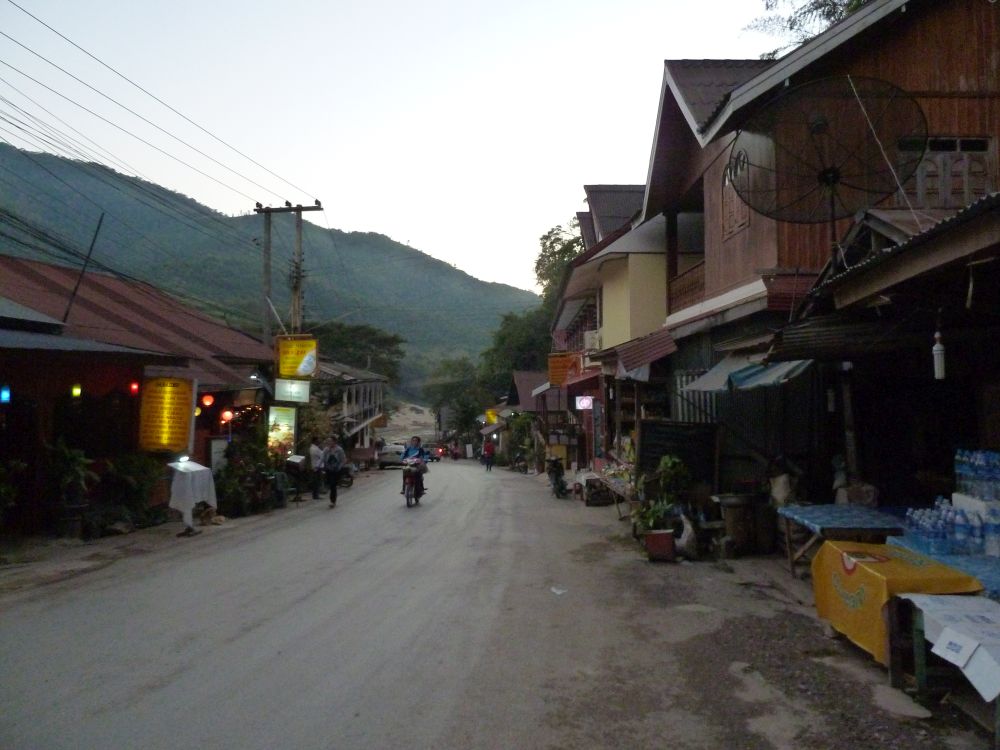
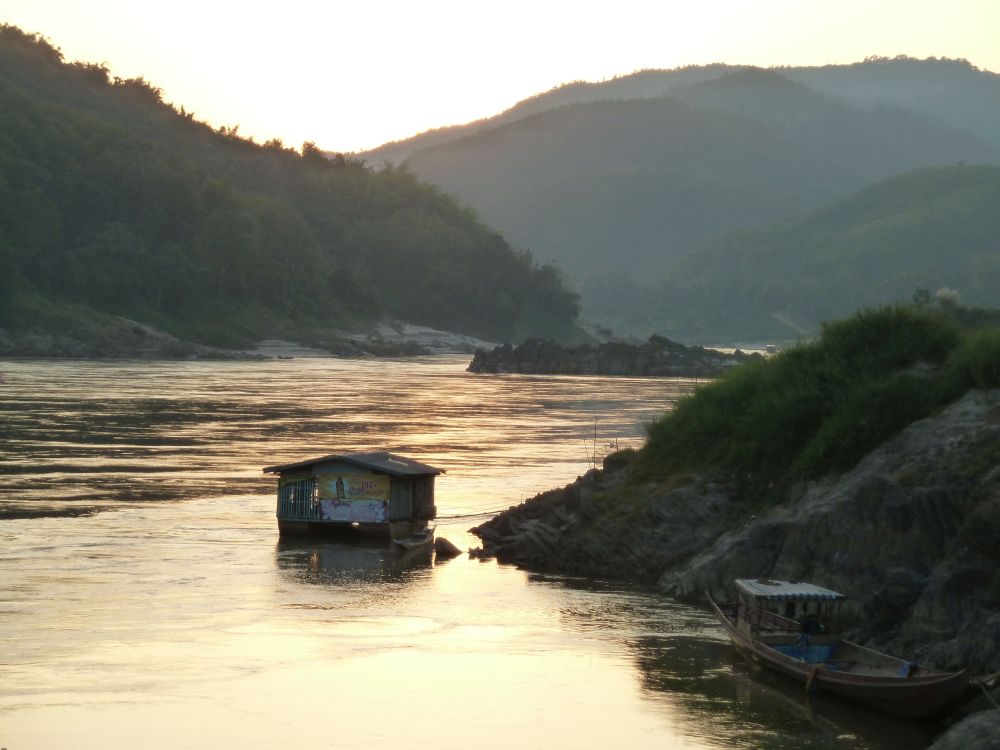
Our off-boat trip on the second day was first to a cave which held 4,000 Buddhas. After our wat-spotting times in Chiang Mai, I felt pretty Buddha-d out, but I did enjoy getting some exercise in the form of walking up 220 steps to the higher cave.
Our second stop was to a whiskey village, which was pretty much what it sounds like – a village where they brewed whiskey from rice. We got to taste it. I liked the one that was more fruity. I declined to purchase some since I’m avoiding buying anything that could weigh down my backpack. We walked through the rest of the little village market which had stalls of scarves and other tourist knickknacks for sale. As usual, my heart sank a little whenever I had to look away from a hopeful face offering to sell me a scarf. It struck me, not for the first time, about how hard these women worked and how much a few dollars meant to them. This is the hardest part of travelling in such impoverished countries. I wish there was a way to support the people without having to buy stuff that I don’t need.
We arrived in Luang Prabang on the second evening. The boat crew were nice enough to order a free song taew (a type of taxi truck) for us, which deposited us at our hotel (we stayed at the Lao Lu Lodge). We were welcomed warmly there and shown to our room which was delightful. It was a little bit like a log cabin with its dark wood floors and wood shuttered windows. The bathroom was large and cheerful and it had hot water (score!).
Luang Prabang is quiet. It’s a good place for a writer to spend a summer. The town itself appears to cater to tourists. This is not a place to go to to see how Lao people live. The touristy-ness made it a bit dull for me but at least the tourists were not overly obnoxious. The town itself is built in a French colonial fashion, something that the travel magazines exude eloquently about, which makes me feel a little uncomfortable. “The most charming tourist destination in all of Southeast Asia! It is so French!” As far as I am concerned, all the non-French and non-colonial-vestige aspects of all the countries I’ve seen so far have been quite adequate. I don’t really need any European legacy to tempt me to go visit any of them.
You can’t really avoid the French-ness though. Most houses are built in a French colonial fashion. A photo I took of it from the top of Mount Phousi reminded me of photos of Indochina from WW2. It almost seemed like time had stood still since then.
Laos is another country where I haven’t lucked out on food. I’m sure it’s delicious but original traditional food is difficult to find in an area that exists solely to cater to Westerners. I did however find the most delicious pho here. I was going to save that for when I entered Vietnam but I couldn’t resist.
That’s it from me on this lazy Monday afternoon. It’s a warm afternoon, perfect for a walk along the Nam Khan river, walking from one gilded wat to another, or roaming through the back alleys past little cats curled up in the sun.
